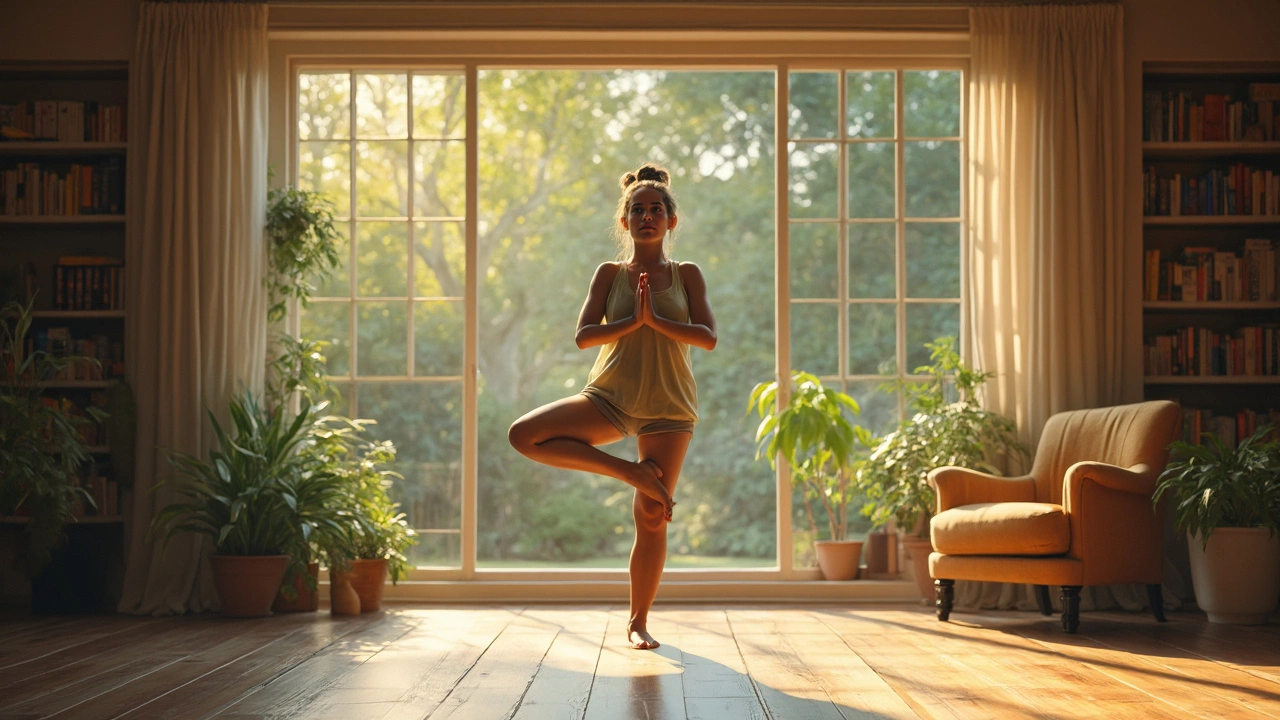Yoga for Health: Simple Tips, Short Routines, Real Results
Want less stress, better sleep, and more flexibility without spending hours at a studio? Yoga can give you that—fast. You don’t need fancy gear or perfect flexibility. A few smart moves and steady breathing, done regularly, change how your body and mind feel.
Start small. Even 8–15 minutes most days beats doing nothing. Pick a consistent time—morning to wake up, lunch to reset, or evening to unwind. Got ten minutes now? Great. You can get noticeable benefits in weeks if you practice a little every day.
Quick 10‑Minute Routine
Try this short sequence you can do at home. Move slowly and breathe through each pose: inhale through the nose, exhale through the nose.
- Cat–Cow (1–2 minutes): On hands and knees, arch your back on an inhale (cow), round on an exhale (cat). This wakes the spine and eases stiffness.
- Downward Dog (1 minute): Tuck toes, lift hips back and up. Bend knees if hamstrings are tight. Press heels down gently.
- Low Lunge (1 minute each side): Step one foot forward between hands, sink hips, lift the chest. Great for hip mobility.
- Warrior II (30–45 seconds each side): Strong legs, open chest. Builds stability and balance.
- Standing Forward Fold (30–60 seconds): Hinge from hips, let the head hang. Good for calming the nervous system.
- Tree Pose (30 seconds each side): Practice balance and focus. Use a wall if needed.
- Savasana (2 minutes): Lie on your back, relax every muscle, breathe naturally. This rest seals the practice.
Safety Tips & Modifications
If you have high blood pressure, recent surgery, glaucoma, or are pregnant, check with your doctor before trying new poses. Feeling dizzy? Sit down and breathe. Sharp pain is a stop sign—back off or skip that move.
Use props: a chair for balance, a block under your hand, or a strap for tight hamstrings. Child’s Pose is a safe reset during any sequence. Want more strength work but low impact? Add a few wall push-ups or chair-assisted squats between poses.
Make it a habit by pairing yoga with something you already do—after brushing your teeth, before coffee, or right after work. Track progress by noting how your breath, sleep, or stiffness change over two weeks. Keep it simple and consistent.
Yoga isn’t a cure-all, but it helps a lot of people feel better day to day. Try short, regular sessions, respect your limits, and adjust as you go. Need a quick printable routine or a short video recommendation? We’ve got simple guides that fit into busy lives—one small change can make a big difference.

Yoga and Meditation: Natural Ways to Tackle Dizziness
Feeling dizzy can be unsettling, but yoga and meditation offer natural relief without the need for medication. These practices help improve balance, reduce stress, and enhance focus, which can all contribute to reducing dizzy spells. Learn simple techniques and poses that anyone can try at home to help manage dizziness effectively.
Read More